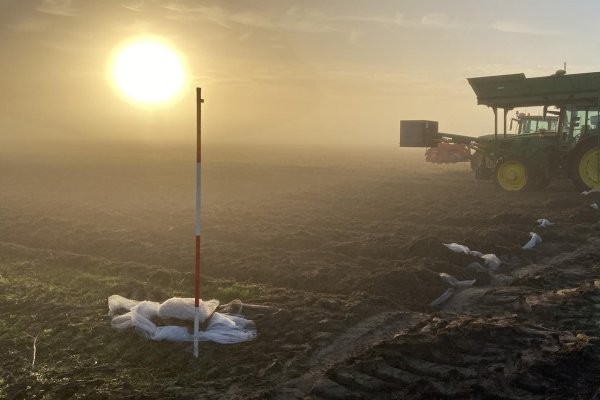Many bulb growers rent one or more plots every year for their cultivation: this has everything to do with the required ample crop rotation. The cultivation of bulbs can have consequences for soil fertility. The Greenhouse Horticulture and Flower Bulbs Business Unit of Wageningen University & Research is therefore working on a tool with which growers and landowners can make clear mutual agreements. Researcher Sjoerd van Vilsteren: "Good soil management starts with good agreements between landlord and tenant about cultivation."
There is 'land hunger' in bulb growing, says Van Vilsteren: Dutch bulb growers are looking for suitable plots every year. The crops cannot be grown on the same plot every year. For example, tulips can only be grown on the same clay soil once every six years. That is why bulb cultivation is also called a 'traveling bulb stand'.
It can therefore be financially attractive for a landowner to rent a plot to a bulb grower. Prices have risen sharply in recent years, mainly because there are fewer and fewer plots available. The Netherlands is a relatively small country in which farmers increasingly have to compete with housing and nature reserves.

If the cultivation of tulips, for example, takes place in a neat manner at the arable farmer, then both parties benefit from this. The tulip grower has beautiful soil for cultivation and the arable farmer has a crop that is harvested early, so that plot maintenance (leveling, draining) can take place in dry conditions and a long green manure can be grown. Moreover, the bulb grower often pays well.
Van Vilsteren: "This is a win-win situation. But growing bulbs can be intensive. There is a lot of fertilization, spraying and irrigation. If it is not clear what people expect from each other prior to cultivation, annoyances can still arise. Perhaps the bulb farmer wants to irrigate more than the arable farmer wants, perhaps the bulb farmer pays less attention to weeds than the arable farmer would like, perhaps the bulbs have been planted in slightly too wet conditions? These are differences of opinion that can get in the way of cooperation."
In addition, landowners are bound by requirements of legislation and potential customers, among other things. Van Vilsteren: "Renting land is different from renting a parking space, for example. What a bulb grower does on a plot has an impact on, among other things, the soil, nature and the environment."
It is important for bulb cultivation that sufficient land remains available. Making good mutual agreements between growers and landowners is an important step. That is why WUR conducts research among both growers and landowners into their wishes and needs. Based on this, WUR is developing a tool for negotiations. Such a tool could, for example, be a checklist, whereby both parties can indicate prior to cultivation which themes they consider important to discuss. This can be about water but also about combating diseases and pests. Van Vilsteren: "This ensures mutual understanding, clear agreements and a clearer picture of everyone's responsibilities in the rental agreement. This way, cultivation remains a win-win and the soil is healthier!"
Source: wur.nl










